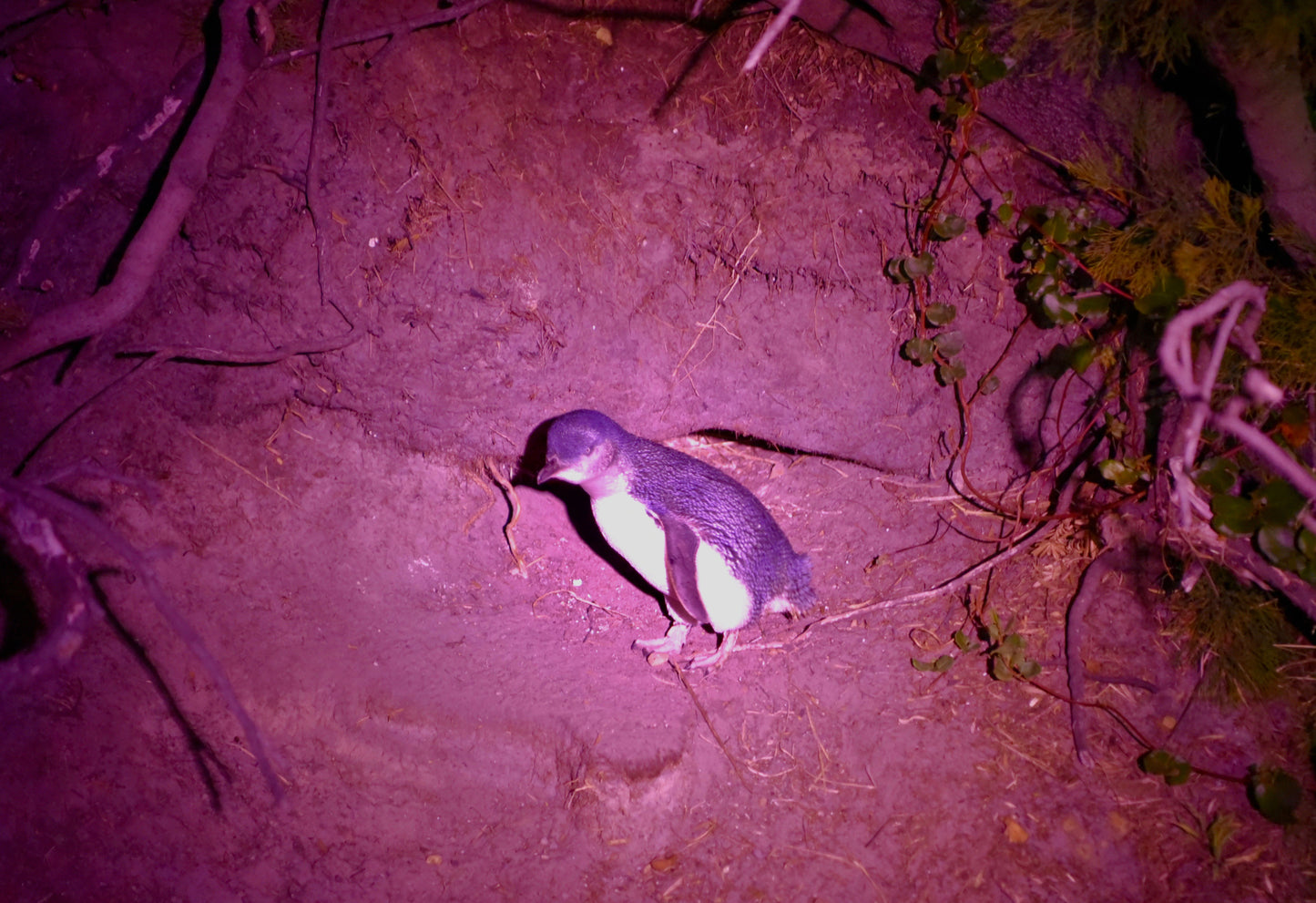Offer
Provide additional details about the offer you're running.

Did you know that Fairy Penguin poo sparkles? This is due to small undigested fish scales and is just one of the many fascinating characteristics of this delightful little creature. On our tours up the east coast of Tasmania we stay overnight in the small coastal town of Bicheno. Just on dark, with a red filtered light, we take our guests down to the beach to spot the procession of Penguins coming ashore for a night of rest. We generally expect to see at least one and often several coming home to the safety of their burrows. In the height of breeding season we may be treated to a spotting of several dozen.
The Fairy Penguins are the only Penguins to breed on Tasmania and its many islands. There is an estimated population of 110000-190000 breeding pairs with the vast majority making their homes on the islands around Tasmania. Living an average of 10-15 years and growing to about 30cm tall the little penguins spend all day hunting small school fish, squid and krill. They take shallow, short dives between 10 and 30 metres while avoiding seals, sharks and sea eagles that prey on them. The Fairy Penguin is the smallest of the 17 Penguin species and have as many as 10,000 slate-blue/black feathers with a white chin and chest.
The breeding season usually begins in Winter. Breeding pairs often care for 2 chicks at a time and can breed 2-3 times per season. Fairy Penguins mate for life and both parents take turns incubating the eggs which hatch after about 35 days. Chicks grow quickly and can be heard screaming at dusk, awaiting their parents return with food after a long day fishing. Young Penguins are ready for the sea at about 8 weeks old. The Fairy Penguin has an annual moult which takes about 15 days. They do not go out to sea during this time as they have temporarily lost their waterproofing. Instead they remain in their burrows and do not eat until the moulting period is past.
Threats to the population of Fairy Penguins include loss of suitable habitat and introduced predators like domestic dogs and cats. The residents of Bicheno take this threat seriously and are assiduous in ensuring their pets are kept indoors from dusk to dawn. Other human activity also poses a threat to Penguin populations; Gill nets can drown Fairy Penguins and human rubbish such as plastic may be swallowed or become stuck around the neck, chocking the penguin. Oil spills whilst rare are not only toxic when ingested but damage their natural insulation, allowing water to get past the Penguin's normally water proof feathers. When this happens the Penguins can freeze to death in cold water.
Fairy Penguins are protected wildlife. It is illegal to catch, attempt to catch or otherwise harass them. Offences are taken seriously. The Parks & Wildlife department in Tasmania are always looking to improve the living and environmental conditions for Tasmania’s population of Fairy Penguins.
When attempting to spot the Penguins you will need to remain quiet and keep movement to a minimum. They have excellent vision and easily spot movement, especially if they see you outlined or silhouetted against the evening sky. They may consider you a threat and not move until they feel safe. Only dim torches emitting a red light (red cellophane over the lens is OK) should be used to spot them and never toward the water or directly at the Penguins. Flash cameras should not be used on the beach. Often the best places to view Penguins are behind the beach where they feel more secure. Again, only use red light. Take care driving in any area the Penguins inhabit as they will likely be crossing the roads around dusk to get to their burrows. Enjoy any sightings you have of this cute little creature.